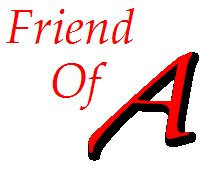I’ve always loved comics, but I didn’t always appreciate them.
As a kid, I would create my own comics, and I developed a fairly time-consuming routine to produce them---on sheets of my Dad’s typing paper. Somehow, it never occurred to me that the actual means of comics production would involve using heavier paper in a much larger format. I was aware, however, that comics were typically not all made by one person, so my title pages would often have credits to people other than myself, including my brother. I can remember showing him a title page, and him giving me a puzzled look, with his Bucky Beavers still straddling his lower lip, orthodontia still being a few years away.
As it turns out, little moments like that made a far bigger impression on my brother than they did me. The truth is that I’ve always been self-absorbed, and more interested in ideas than in people. This is not the sort of thing that most people admit, but it is not necessarily a bad thing to have that orientation, especially if you want to create things that are bulging with many ideas at once. The Finnish composer Jean Sibelius was once discussing large-scale formal design in symphonic works with Gustav Mahler, who (in response to a compliment from Sibelius) protested the notion that such works should be tightly focused on developing a minimal number of musical ideas: 'No, a symphony must be like the world. It must embrace everything.'
So it was with comics production. First, I would actually drew my gutters in pencil, and I’m afraid that more than one page was influenced by Simon and Kirby’s habit of including circles in their page layouts. Not having a compass could be a problem here!
 After having the grid lightly sketched, I would sketch in the word balloons, whose shapes always paradoxically disappointed me. Keep in mind that in order to do this I would have to be holding a vision in my mind of what sort of action each “cell” on the page would hold, and a rough idea what characters might say, or what narration might be required. Only after having a page or two outlined in this way did I attempt to draw.
After having the grid lightly sketched, I would sketch in the word balloons, whose shapes always paradoxically disappointed me. Keep in mind that in order to do this I would have to be holding a vision in my mind of what sort of action each “cell” on the page would hold, and a rough idea what characters might say, or what narration might be required. Only after having a page or two outlined in this way did I attempt to draw.
My idea of composition was always wrapped around the understandable prejudice of the action or dialogue required, so in point of fact they often lacked graphic interest, revolving around a nearly-complete action figure or ‘talking head’ sort of appearance. Details about the world the character might inhabit were often secondary or even superfluous, to be filled later with a wash of color.
In my innocence, I never absorbed the artist’s discipline of sketching anatomical figures first as blocks or cylinders, and then later alter the rendering to add musculature or wrinkles in clothes, etc. Everything would be vomited onto the page, in as nearly complete fashion as I could render all at once, with the sort of unmerited confidence and ego that can only children, in their ignorance, can possess.
This led to problems: for one thing, I already had pronounced stigmatism. I thus unconsciously tended to “slant” the perspective on figures without meaning to, especially since I was pursuing the dynamism of Kirby and his imitators. Imitation may be the sincerest form of flattery, but it carries definite drawbacks to development. As a child, I could not appreciate that attempting to duplicate Kirby’s baroque treatment of figure drawing was leading to poor habits, and I often had the experience that only after completing a page did I realize how exaggerated and unrealistic this or that feature of my composition was!
In addition to lacking skill, I also lacked taste in choosing (and in interpreting) my role models. At one point, all my superhero fighting sequences were tributes to Sal Buscema, who would typically have a pair of arcs interrupted by a star shape to represent the landing of a blow:
I also became fond of drawing head figures from below, with stylized shading of the lower nose, a la Gil Kane. When you’re in a hurry to finish the process, and when you don’t have a solid grounding in fundamentals, you tend to seize upon the surface features of a given artist’s rendering as if it were an essential part of composition, rather than a stylistic flourish.
The result? Many panels with star shapes obscuring figure composition, and many ‘talking head’ shots with weird, exaggerated nostrils. As my father remarked more than once, all my characters had pig noses.
Once the drawing was in place, polishing was required. One part of the finishing process I dearly loved, while the rest struck me as mere drudgery. The part I loved was coloring. I had a set of some 40 or more colored pencils, and I spent many happy hours sharpening and resharpening them while playing with all the possible ways you could layer different shades to produce new hues and textures. I was aware even then that the nature of colored pencils would lead to a very different sort of output than the flat poster colors that were the staple of comics then. It was laborious to achieve a very brilliant red or blue on any part of the page, because you would have to run the same colored pencil over the same ground over and over again to achieve that effect.
Very quickly, I learned to accept that this was not only time-consuming, but it didn’t look very good, especially on sheets of typing paper already heavily clotted with pencil sketching. Besides, with my little pencils, I could do so many things that couldn’t be done with color separations then. Today, some forty years later, I still love using colored pencils. I regularly require my science students to use them in drawing and coloring figures, constantly exhorting them to shade lightly rather than heavily.
However, coloring was not the only part of finishing the comic. Completing the comic meant going over things with a pen, and finally committing the balloons and text boxes to specific sentences, in ink. I quickly learned not to “ink” every aspect of the now colored figure drawings, but unlike the drawing and coloring phase, I was pretty much bound by what had gone before. So, bit by bit, I would go over the gutters, the lumpy balloons and the figures, and I would have a complete page. But at this stage of the game, in my mind, the page was already completed, and so to actually physically complete it was a bit of a bore. I remember many comics where the pages really weren’t that complete that were set aside so that I could start telling the next part of the story. The impetuous of youth, and all that.
Another frustration was the realization that I had often misjudged the amount of space needed to convey sentences, so I would veer back and forth between balloons that were crammed with too many words, and balloons that vacuously surrounded too-little text. Comically, it never occurred to me that the text should have been crafted and polished before the balloon was positioned around it.
The final result of my enthusiasms rarely satisfied me, and were often trashed rather than kept, but that was okay, because I was ready to move on to the next flight of fancy. Sometimes that would involve another comic, sometimes I would take a stab at actually ‘writing’ with my Dad’s typewriter, sometimes it would just involve elaborate, self-directed play....which, when all is said and done, is probably more stimulating to mental development than all the scripted lessons and formal education you can muster.
Now, the purpose of all these fond glances backward is not, actually, to memorialize my attempts to craft comics. As I’ve tried to make clear, they were something I pursued with intense passion and an amusing lack of awareness, but it was not an abiding interest. This was a phase that probably lasted, at most, two years. It reached its peak in Panama on those rainy days when outdoor play was difficult, and before my mother had decided I would have piano lessons. While I would continue to draw and continue to avidly read comics until about 1978, it was hard to keep current on the comics scene in Panama and my restless pursuit of new stimuli for fantasy gradually pulled me toward art history, musical composition and literature. At some point, I rather foolishly concluded that comics were for kids, and at some point, I started keeping most of my elaborate, self-directed play to myself.
How wrong I was, and how wrong-headed. Apparently, all that tomfoolery was the stuff of dreams. My real interest in drawing out these memories is in understanding how my brother perceived it, and how it affected his life. Yesterday I wrote about my father’s achievements. Tomorrow I will tell you about my brother.
Word Count: 1,487
Total: 4,705






No comments:
Post a Comment